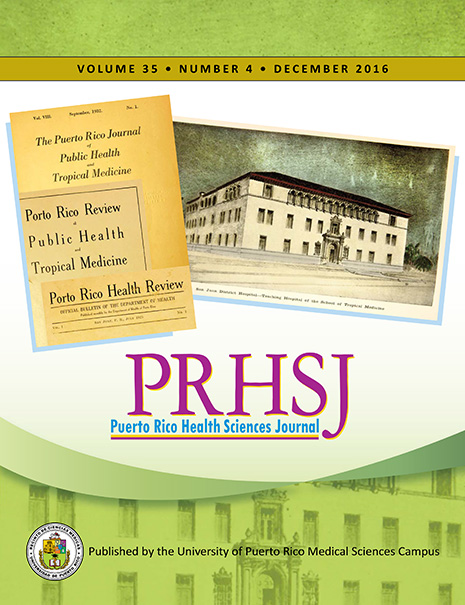Abstract
Objective: Despite being the standard of care, thrombolytic therapy with tissue plasminogen activator (t-PA) is currently administered to only 5% of acute ischemic stroke (AIS) patients in the United States. Published scientific information regarding both the use of t-PA for AIS in Hispanic patients and its impact on short-term mortality is scarce. The objectives of this study are to investigate, among Puerto Rican patients hospitalized with AIS, the rate of t-PA administration, and the risk of in-hospital mortality in patients who received t-PA vs. those patients who did not receive t-PA. Methods: We performed a secondary analysis of data from patients with AIS admitted to acute care facilities throughout Puerto Rico in study years 2007, 2009, and 2011who were participating in the Puerto Rico Cardiovascular Disease Surveillance System. Multivariate logistic regression was used to determine the independent association between treatment with t-PA within 4.5 hours of symptom onset and in-hospital mortality. Results: Of the 1968 study patients hospitalized with AIS, 104 (5%) received t-PA treatment. After adjustments for demographic and clinical confounders, patients receiving t-PA had similar odds of in-hospital mortality as patients not receiving t-PA did (OR = 2.49, 95% CI = 0.81–7.66). The receipt of concomitant anticoagulation medication was independently associated with relatively lower odds of in-hospital mortality (OR = 0.42, 95% CI = 0.20–0.88). Being over 80 years of age (OR = 2.03, 95% CI = 1.13–3.68), being obese (OR = 1.88, 95% CI = 1.01–3.49), and arriving in an ambulance (OR = 3.61, 95% CI = 1.95–6.68) were all independently associated with relatively higher odds of in-hospital mortality. Conclusion: Among patients hospitalized in Puerto Rico with acute ischemic stroke, t-PA treatment was not significantly associated with in-hospital mortality.
Authors who publish with this journal agree to the following terms:
a. Authors retain copyright and grant the journal right of first publication with the work simultaneously licensed under a Creative Commons Attribution License that allows others to share the work with an acknowledgement of the work's authorship and initial publication in this journal.
b. Authors are able to enter into separate, additional contractual arrangements for the non-exclusive distribution of the journal's published version of the work (e.g., post it to an institutional repository or publish it in a book), with an acknowledgement of its initial publication in this journal.
c. Authors are permitted and encouraged to post their work online (e.g., in institutional repositories or on their website) prior to and during the submission process, as it can lead to productive exchanges, as well as earlier and greater citation of published work (See The Effect of Open Access).
